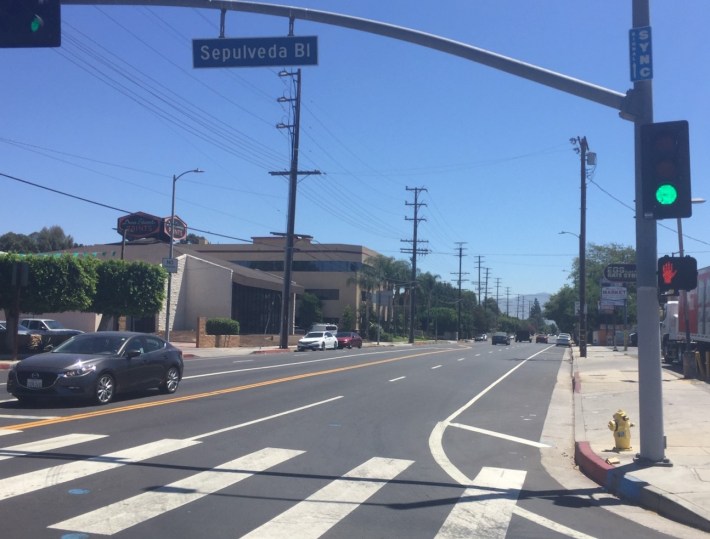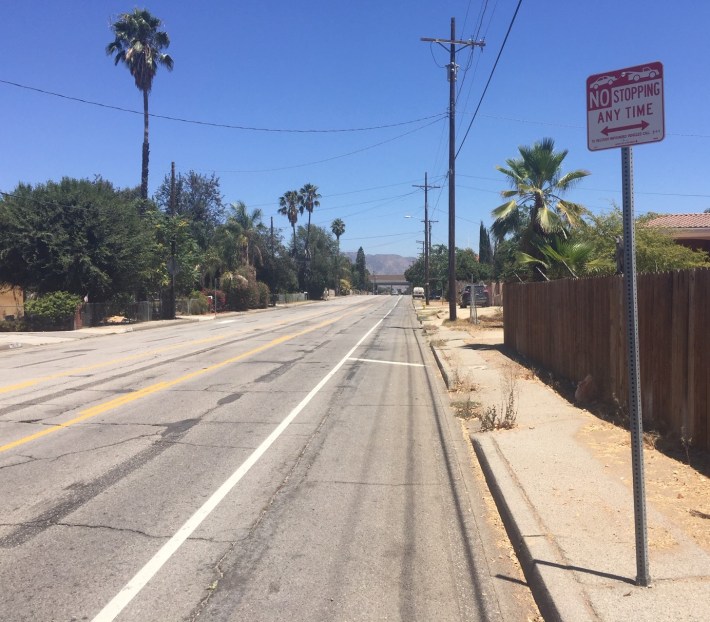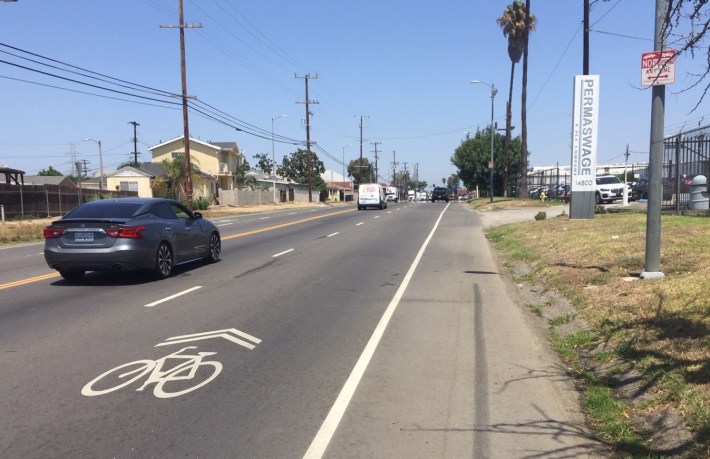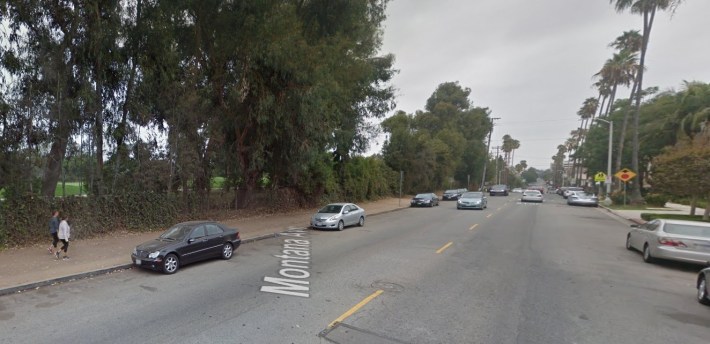Last week, Streetsblog L.A. reported on L.A. City's fiscal year 20-21 annual bikeway mileage. Today's post is a follow-up to that piece, highlighting some missed opportunities where the city could have done more, longer, and better bikeways. Hardly any of these are egregious insults to the bicycling public. The city Transportation Department (LADOT) has been good at adding straightforward bike facilities where there is sufficient width to add them without removing anything from drivers. This Streetsblog editor just wishes that they would go a bit further - mostly in figuring out how to squeeze facilities through pinch-points, where they instead drop.
(A lot of the facilities referenced in today's post are outlined in that earlier post, and documented on SBLA's FY20-21 bikeways spreadsheet.)
Several - pretty much the worst of - FY20-21 missed bikeway opportunities were covered in earlier Streetsblog posts:
- When it widened the Riverside/Zoo Bridge, the Bureau of Engineering failed to add approved bike lanes, as depicted in renderings in the project's environmental clearance document.
- Similarly, BOE has, for several years now, delayed adding approved bike lanes on the widened North Spring Street Bridge. BOE, perhaps at the urging of City Councilmember Gil Cedillo, also appears poised to miss a bikeway connection along the new block where Wilhardt Street was extended for this project.
- LADOT's omission of bike lanes west of Hill Street on 5th and 6th Street was noted in last year's missed opportunities post.
- The lack of a southbound bikeway as part of added protection on Figueroa Street (in DTLA) was noted in earlier SBLA coverage of that facility.
In some cases, the LADOT stopped bike lanes short of where they could fit. These include:
- Westbound bike lanes on Martin Luther King Jr. Boulevard (where LADOT added a buffer this year) start near Victoria Avenue, but there is space for them to start a block earlier, at Marlton Avenue.
- It would be a tight fit, but the city's new Chatsworth Street bike lanes should really connect all the way to Sepulveda Boulevard - a block from their terminus at Columbus Avenue. The stretch between Columbus and Sepulveda is nearly all strip malls and other buildings with copious off-street parking, so a good solution would be to remove ~10 on-street parking spaces to make way for continuous bike lanes. Even if this on-street parking is somehow critical to preserve, the street width appears sufficient to include a continuous one-way eastbound bike lane for this block, with westbound sharrows (similar to LADOT's 2021 treatment on 7th Street at Western Avenue.)

More on the San Fernando Road bike lanes: In addition to extending west an additional block, there appears to be plenty of space to extend them east/northeast too. In this area, which appears recently re-striped but not re-paved, the city added a wide striped curb area (called a fog lane or a shoulder lane.) There is sufficient width and no parking in that area, and cyclists already bike there, so it should be a bike lane.

In Lakeview Terrace, the city added a mile and a half worth of new protected bike lanes... but west of Foothill Avenue, the city added a protected fog lane (see image at top of post.) Most of that protected area (where cyclists are riding) could have been a bike lane.
In South L.A.'s shoestring annex, where LADOT added new bike lanes on Figueroa Street, the road narrows somewhat, making continuous bike lanes a bit challenging. But they do appear to be possible there - assuming legal minimum 4-foot curb bike lanes and slightly narrowed car lanes. Instead LADOT opted to drop the bike lanes for a couple blocks, adding sharrows at the pinch point. While this is marginally better than dropping the bike facility entirely, the sharrowed stretch is not great.

There are a few places where LADOT installed conventional bike lanes that could have fairly easily been protected lanes instead:
- The Figueroa Street bike lanes (part of the facility shown in the photo directly above) see a lot of trucks parking in them. There is little actual designated/legal on-street parking there (and lots of off-street parking), so the facility would be a lot safer for cycling if it included protection to discourage drivers from parking there illegally. Judging from the street striping, it looks like the city intended to add bollards in some buffers there, but didn't.
- The long block of the new Laurel Canyon Boulevard bike lane located along Fernangeles Park looks like it could have been parking-protected.

The city added near-worthless sharrows on Montana Avenue in Brentwood. About half of the sharrowed length is along the Brentwood Country Club golf course. Along the outside of the club's fence is a nearly 20-foot wide unpaved area that serves as an informal walking path.
It would be orders of magnitude bigger and more complicated - somewhat expensive, would require outreach to the club and other adjacent wealthy property owners, would likely be multi-jurisdictional as this is the boundary with the city of Santa Monica - but the uninterrupted path already effectively serving as an active transportation corridor points to a better project. To make this stretch of Montana bike friendly - for all ages - the north side of the street (along the golf course fence) could be a continuous bikeway, uninterrupted by car traffic. This might be a full-on bike path, or even parking-protected two-way bike lanes.
Lastly, not a missed opportunity, but a note on a bike path that Streetsblog L.A. reported on in May, but didn't count in the FY20-21 mileage totals. SBLA announced that the new Boyle Heights bike path (below the under-construction Sixth Street Viaduct) appeared open - but the path has been closed for additional construction on the Myers/Mission Roundabout.


That's all for Streetsblog's listing of FY20-21 missed opportunities. Note that this is not a comprehensive list of all the missed opportunities everywhere throughout the city, but more a look at where bikeway improvements were done and could probably have been done better.







